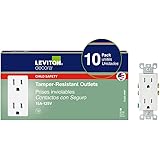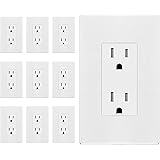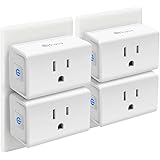Imagine this scenario: your carefully curated smart home ecosystem, a symphony of interconnected devices, suddenly goes silent. One day, your meticulously programmed lights fail to dim, the thermostat ignores your presence, and your security camera feed freezes. This isn’t just an inconvenience; it represents a fundamental breakdown in sophisticated smart home integration. The brief glimpse of cutting-edge smart gadgets in the video above showcases the potential. However, the true marvel lies beyond individual devices. It resides in their seamless, secure, and intelligent orchestration.
Our goal isn’t merely to accumulate smart gadgets. We aim for a cohesive, responsive smart home experience. This requires a deep understanding of underlying technologies. We must grasp interoperability challenges. Expertise in network architecture is crucial. Let’s delve into the advanced considerations. We explore making your connected dwelling truly intelligent.
Advanced Smart Home Integration: Beyond Basic Pairing
Effective smart home integration transcends simple device pairing. It involves establishing robust communication protocols. These systems then create dynamic automation routines. They consolidate disparate ecosystems. Imagine a scenario where your entire home adapts to your presence. Lights adjust. Climate controls respond. Security systems activate. This level of sophistication demands expert-level planning.
1. **Understanding the IoT Stack:** The Internet of Things (IoT) stack forms the backbone. It encompasses hardware, connectivity, and data processing. Edge devices perform local computations. Cloud services handle complex analytics. API gateways manage data flow. Each layer presents unique integration challenges. Understanding this hierarchy is paramount. It ensures system stability and responsiveness.
Poorly integrated systems suffer from latency. They exhibit intermittent connectivity issues. They also create frustrating user experiences. A truly integrated system is invisible. It operates seamlessly in the background. This delivers consistent, reliable performance. This is the hallmark of expert deployment.
Navigating Diverse Protocols and Ecosystems for Optimal Smart Gadgets
The smart home landscape is fragmented. Multiple communication protocols exist. Proprietary ecosystems add complexity. Selecting the right combination is critical. It impacts performance, scalability, and security. We need careful consideration here.
2. **Protocol Deep Dive:** Wi-Fi, Zigbee, Z-Wave, and Bluetooth Low Energy (BLE) are common. Each offers distinct advantages. Wi-Fi boasts high bandwidth. However, it can congest networks. Zigbee and Z-Wave create robust mesh networks. They offer low power consumption. These protocols excel for sensors and actuators. Matter protocol seeks to unify these. It promises unprecedented interoperability. Expert integrators leverage these strengths. They design resilient, high-performance networks.
Imagine if your devices could all speak the same language. Matter aims to be that universal translator. It standardizes communication across platforms. This reduces vendor lock-in. It simplifies device management significantly. Adopting Matter-compatible devices is a strategic move. It future-proofs your smart home investment.
Cybersecurity in the Connected Home: Mitigating Risks
Connectivity introduces vulnerabilities. Every smart gadget is a potential entry point. Robust cybersecurity measures are non-negotiable. They protect personal data. They safeguard your home network. Proactive security planning is essential. It minimizes exposure to threats.
3. **Fortifying Your Network Perimeter:** Network segmentation is a key strategy. Isolate smart devices on a dedicated VLAN. This contains potential breaches. Use strong, unique passwords for all devices. Implement multi-factor authentication (MFA). Regularly update device firmware. These steps close known security gaps. They harden your overall defense posture.
Imagine a smart home acting as a fortress. Each device has minimal access to your sensitive data. Data egress policies are strictly enforced. Unauthorized communication is blocked. This proactive stance is vital. It maintains digital integrity and privacy. It protects against sophisticated cyber threats.
The Chinese Smart Gadget Landscape: Opportunities and Challenges
Many innovative smart gadgets originate from China. These devices often offer competitive pricing. They push technological boundaries. However, their integration carries specific considerations. Understanding these nuances is crucial for success. It ensures a balanced approach.
4. **Addressing Supply Chain and Data Privacy:** Source devices from reputable manufacturers. Verify their security certifications. Investigate their data handling policies. Some devices may connect to servers in their country of origin. This raises data privacy concerns. Evaluate potential geopolitical implications. Use caution with unknown brands. Always consider the data implications. Deploying a firewall with geo-blocking capabilities can help. It restricts unwanted outbound connections. This helps manage potential data egress risks.
Imagine importing a fantastic device. It offers unparalleled features. However, its app requires excessive permissions. It constantly communicates with distant servers. This scenario demands scrutiny. We must balance innovation with privacy. We safeguard personal information diligently.
Advanced Automation and Edge Computing: Elevating Intelligence
Basic routines like “turn on lights at sunset” are foundational. True smart home intelligence goes far beyond this. It involves predictive analytics. It utilizes localized data processing. Edge computing brings processing power closer to the data source. This dramatically reduces latency. It enhances system responsiveness. It opens doors for sophisticated, context-aware automation.
5. **Leveraging Local Processing and AI:** Implement home automation platforms with local control. Home Assistant or OpenHAB are excellent examples. They reduce reliance on cloud services. This improves reliability and privacy. Integrate AI-powered sensors. They detect patterns in your behavior. They predict your needs. Imagine a system anticipating your arrival. It adjusts environmentals proactively. This creates a truly responsive living space. It minimizes energy waste.
Consider a smart home that learns your habits. It pre-cools a room before you enter. It dims lights when you settle down for the evening. This contextual awareness comes from edge processing. It processes sensor data locally. It avoids round-trips to the cloud. This provides instant, intelligent reactions.
Future-Proofing Your Smart Home: Design for Longevity
The smart home industry evolves rapidly. New devices and standards emerge constantly. Design your system with adaptability in mind. Embrace open standards and platforms. This protects your investment. It ensures long-term functionality. It allows for future upgrades and expansions. Avoid vendor lock-in wherever possible.
6. **Strategic Device Selection and Open Standards:** Prioritize devices compatible with open standards. Look for Matter, Zigbee, and Z-Wave certification. Choose platforms with strong community support. Open-source solutions offer flexibility. They provide greater control over your ecosystem. Invest in a robust home network infrastructure. High-quality routers and access points are essential. They support future bandwidth demands. This lays a solid foundation for your advanced smart home system. It allows for seamless expansion. These principles ensure your smart home remains cutting-edge.











